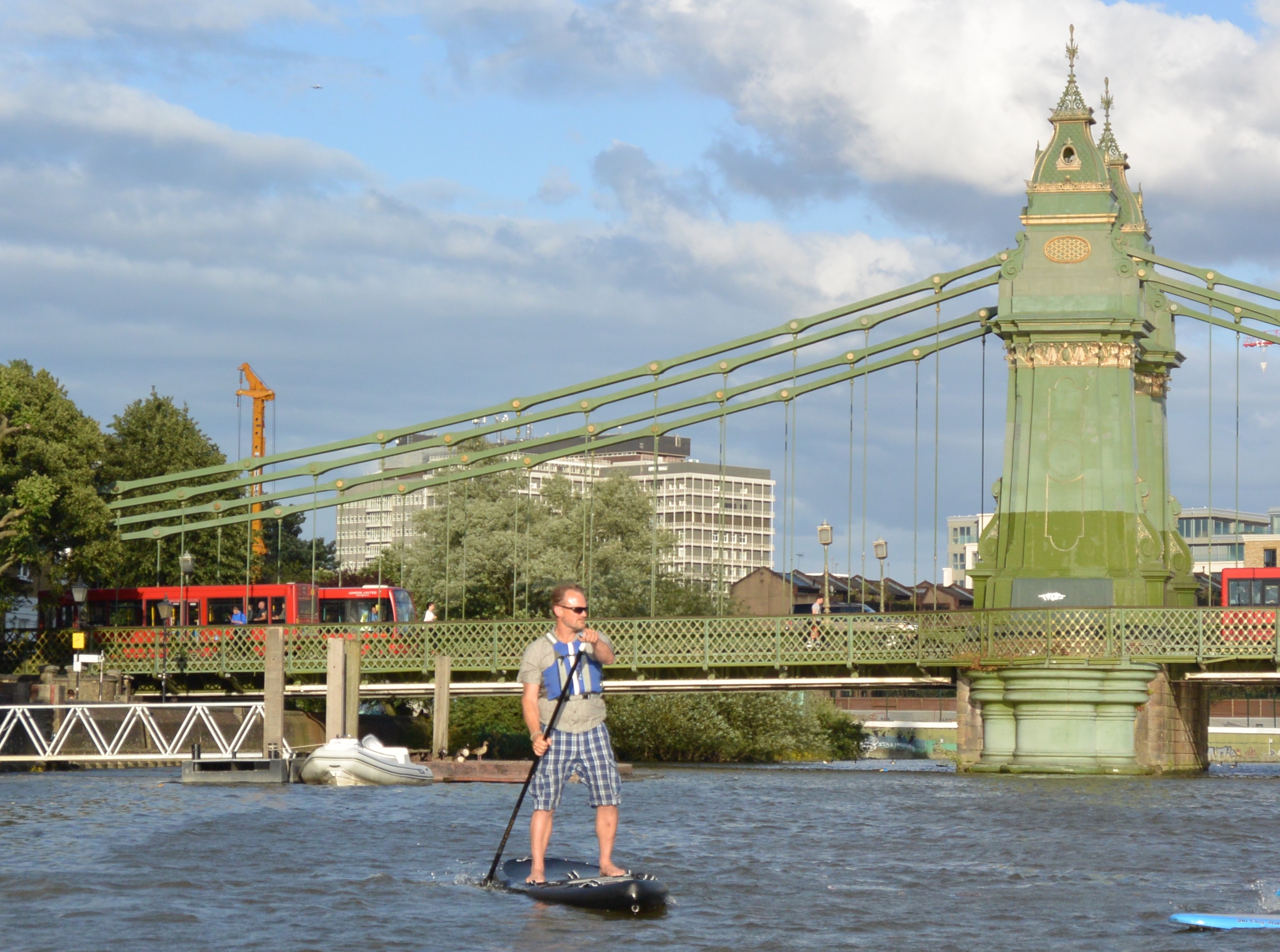
Level 1
Introduction
The Tidal Thames is a risky environment to anyone in / on any craft unprepared for it. This course aims to prepare anyone wanting to paddle SUPs canoes and kayaks on the river downstream of Teddington Lock for situations they will encounter. It is aimed at getting more people padding the river independently.
The emphasis is on knowledge and understanding of the river and not on high levels of paddling skills.
Before paddling in unsupervised groups (minimum of 2) on the Tideway below Putney Bridge and down to Chelsea Bridge SUP paddlers should have the following skills and knowledge :
Personal Skills Canoeists to achieve BCU 2 star and SUP paddlers to demonstrate the following skills to a level appropriate for the river to Chelsea Bridge:
• Turning (using forward and backward strokes effectively)
• Ability to travel in a straight line – paddling on one side (on a suitable board with good tracking)
• Good defensive paddling to avoid falling off at critical times
• Self rescue
• Use of a waist leash and towing another paddler with a leash
• Prone paddling and paddle recovery
• Paddling confidently through wash and how to deal with wash from the side (kneel paddling)
• Ability to move quickly away from hazards (paddling at speed) – also hazard perception
• Ability to paddle against a strong current
• Awareness of traffic movement on the river and keeping look out
Local River Knowledge specific to the Thames
• Position on the river and being seen rules of navigation – rowing code responsiblities
• Tides – Spring & Neap appreciation of ebb tide warning system tide tables
• Currents – and how these interact with tides Current speeds and how to assess
• Pinning risks and hazards. Understand of how to avoid them
• Boat Hazards – including rowers and awareness of the rowing code Collision avoidance
• Effects of weather, wind, rain, – hypothermia risks
• Planning a trip (taking account of wind, tide and other factors ) Use of tide tables or tide websites
• Relevant PLA Regulations: Byelaws, General directions, Permanent Notices to mariners and Notices to Mariners – London VTS number
• Recreational activity – under boat hazards rowing code etc
• Knowledge of river – names of piers, landmarks etc so that in emergency SUP is able to identify to emergency services his/her location, awareness of closed arches, half-hourly broadcast
• Closed arches Why arches are closed and where to get info wind effects under bridges
General River Knowledge
• Understanding pinning hazards – moorings etc. basic knowledge of bridges
• Obstructions underwater logs etc L2 when risk increases
• Night paddling protocol (lights and additional safety considerations)
• L2 secondary wash and types of wash
2 hrs on river
Equipment knowledge
• Leashes – best type and correct use and when to release
• PFDs / buoyancy aids
• Lights and reflective / high visibility clothing
• Suitable clothing wetsuits, drysuits, thermals
• Board characteristics – raceboards, general purpose boards, air boards L2
London Clubs to adopt this as criteria for allowing members to take out boards without supervision and to go downstream of Putney.
Paddlers to be signed off by a designated Thames Tideway experienced coach
To be taught and tested over 2-3 sessions on the river and some of the knowledge can be tested off water with a Q & A session
Level 2 2 x 2 hr theory sessions 2 x 3 hr practical sessions
Enables trained SUP paddlers to navigate downstream to Tower Bridge
Group leadership and looking after others on the river
Pinning hazards and how to deal with a pinning situation (group member pinned)
Trip planning – Passage plans
Risk assessment – in advance and dynamic on the day assessment
Tide tables – how to read and make time adjustments for different parts of the river not listed
Lower Thames knowledge (river below Putney) and hazards specific to the river between Putney and Central London . Awareness of safe places to exit the river.
River knowledge including names of all / most bridges down to Tower Bridge and approx distance between bridges
Commercial activity – where are tugs and tows likely to be turning, from which pier will high L2speed ferries suddenly arrive/depart
Night paddling Practical part to include a night paddle or a paddle finishing after dusk
Practical skills
Self rescue confidently and quickly
Release a waist leash from water in a current while maintaining control of paddle and board
Coping with wash over 30cm comfortably
Turning quickly and confidently using several turning strokes
All lead coaches / instructors teaching SUP on the tideway will be TSK1 minimum and TSK2 by August 2017 the above.